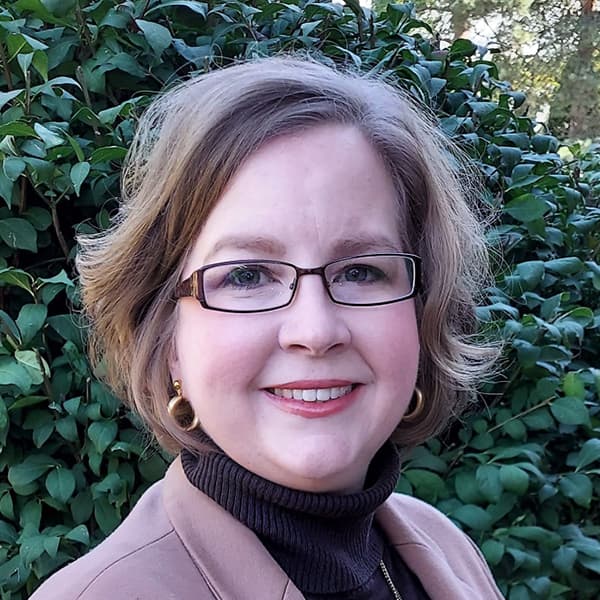By Sarah Sydlowski
This article is a part of the July/August 2022, Volume 34, Number 4, Audiology Today issue.
Imagine this: you’re walking a patient into the sound booth or into your fitting room. You’ve done it hundreds, maybe thousands of times. You probably have a routine into which you will quickly fall. Think about your clinical protocols. Why do you do what you do? Most of us would probably point to the literature or to the protocols of other reputable programs. But I’ll bet if you gave a truly honest answer, it would be, “That’s the way I’ve always done it.”

President | American Academy of Audiology
Think about the associations to which you belong and the certifications you hold, the way you communicate with your referring providers and how you approach your role in the health-care system. When presented with new technology or delivery models, do you feel yourself putting up mental walls, falling back on “That’s the way I’ve always done it… and it’s been just fine,” as a justification to accept the status quo or make only incremental change?
To paraphrase Grace Hopper, a pioneering computer scientist, United States rear admiral, and Presidential Medal of Freedom recipient, “That’s the way we’ve always done it” might be one of the most dangerous, yet overused phrases, in our vocabulary. It both dismisses the possibility of something better and gives unearned credibility to the outdated.
It’s the close relative of “That will never work,” “That’s not what my experience has shown,” “That’s too complicated,” and “This is good enough,” all of which are phrases that do little more than limit our potential.
Adam Grant, organizational psychologist and author of a great read, Think Again: The Power of Knowing What You Don’t Know, asserts that
In our daily lives, too many of us favor the comfort of conviction over the discomfort of doubt. We listen to opinions that make us feel good, instead of ideas that make us think hard. We see disagreement as a threat to our egos, rather than an opportunity to learn. We surround ourselves with people who agree with our conclusions, when we should be gravitating toward those who challenge our thought process. The result is that our beliefs get brittle long before our bones. (2021)
With time, it’s easy to forget why we do what we do. Although likely based on an at least partially fictitious experiment, there is a parable that makes this point well. A scientist puts five monkeys in a room with a bunch of bananas on top of a ladder. Every time a monkey tries to climb the ladder to get the bananas, all the other monkeys are sprayed with cold water. Next time a monkey tries to climb the ladder, the monkeys attack him, pulling him off the ladder.
Over time, the scientist swaps out monkeys one by one with those who have never been sprayed with water, but eventually, even when all the monkeys are new and have never been sprayed with water, they keep pulling off the ladder any monkey who tries to get the bananas. Why? Because they learned and accepted “that’s the way we’ve always done it” and no longer question the reason why, resulting in a culture where no one is willing to try, or change, or take a risk (Maestripieri, 2012).
How many of us would yank off the proverbial ladder any audiologist who suggests that pure-tone audiometry and suprathreshold word recognition testing might not be the only or best way to conduct a diagnostic hearing assessment or that mild hearing loss might in fact be able to be adequately treated over the counter? Why do we use the same clinical protocols that have endured for decades, particularly when “how we’ve always done it” has not moved the majority of people who need our care to take action to improve their hearing?
Almost 80 percent of those with hearing loss (Nassiri et al, 2021) embrace their hearing status quo, clinging to “how they’ve always done it” rather than enduring the sometimes-painful change that results from accepting a hearing loss, or adjusting to new technology. This inaction has prompted pending changes to our industry and associated forecasts of turbulent times threatening the future of audiology practice. Although hearing-care delivery is changing, the real threat is acting with yesterday’s logic in today’s environment, trying to make “how we’ve always done it” fit with today’s changing needs.
If we are to be the change agents who help the public to recognize the importance of hearing health, then we must be willing to model an openness for departing from “the way I’ve always done it.” We must hear and respond to what is needed from us as experts in hearing care. If we want to imagine a compelling future for the profession of audiology, we can’t be afraid of changing how we practice. If we want our associations to be credible and empowered to lead necessary change efforts, we must stop the recitation of what hasn’t been changed and what didn’t succeed and start a rally cry of what we can and will do today.
Although most of us prefer to avoid change and to embrace “the way we’ve always done it,” a January 2021 study by economist Steven Levitt offers a surprising conclusion. He asked 22,511 people to make a decision based on the determination of a coin toss. People who chose change were happier than those who held on to the status quo and months later, indicated that they would do it again, leading Levitt to conclude that a “good rule of thumb is, whenever you cannot decide what you should do, choose the action that represents a change, rather than continuing the status quo.”
Although change feels hard, in the end, it is often for the best. Interestingly, those who were prompted to choose change cited that in some cases they did so because of the extra push the confirming coin toss provided (Levitt, 2021).
So, consider this message an extra push to choose change.
Grace Hopper had a clock whose hands ran counterclockwise, just to remind herself that even the most time-tested approaches can always be reimagined and could be done differently and better. I encourage you to embrace this same open-mindedness and ask yourself, are you acting with yesterday’s logic? Are you progressive in how you approach new technology and care delivery? Are you moving the profession forward with your choices?
Next time you walk into your sound booth or your fitting room, think again about why you are doing what you do. Next time you think things will never change, think again and ask how you can be part of the solution. When you make decisions about how you will support your professional associations, remember that the choices you make today cannot be based on historical models but must be based on our current professional needs. When you think about how audiologists deliver care, reimagine the role audiology can play in the health-care system. The “way we’ve always done it” won’t advance us to the best we can be for ourselves or our patients. Let’s agree as a profession that moving forward, “the way we’ve always done it” won’t be the reason for what we do or who we will become.
References
Grant A. (2021) Think Again: The Power of Knowing What You Don’t Know. Viking: New York, New York.
Levitt SD. (2021) Heads or tails: the impact of a coin toss on major life decisions and subsequent happiness. Rev Econ Stud 88(1):378–405.
Maestripieri D. (2012) What monkeys can teach us about human behavior. Psyhol Today (March 20). www.psychologytoday.com/us/blog/games-primates-play/201203/what-monkeys-can-teach-us-about-human-behavior-facts-fiction (accessed May 25, 2022).
Nassiri AM, Ricketts TA, Carlson ML. (2021) Current estimate of hearing aid utilization in the United States. Otol Neurotol Open 1(1):pe001.


